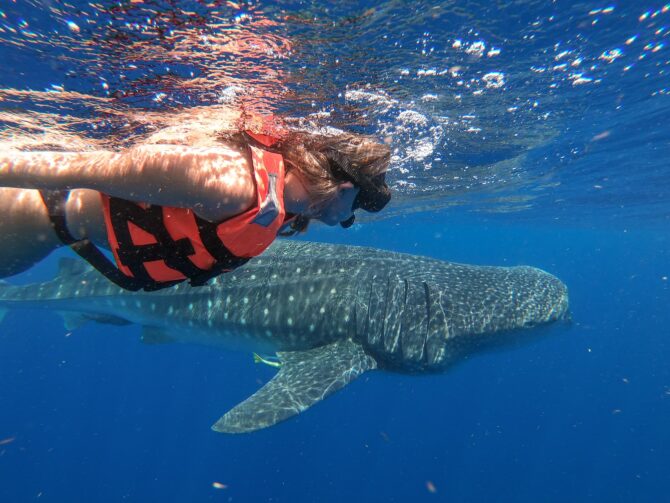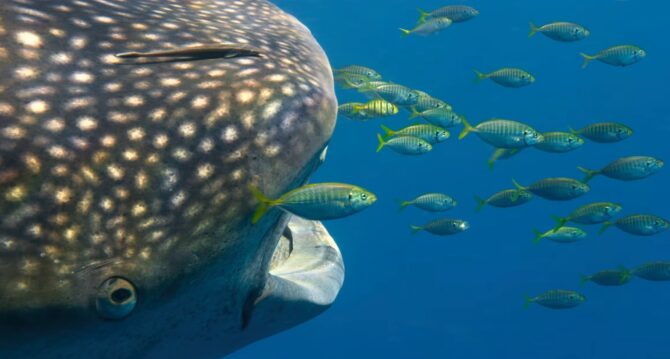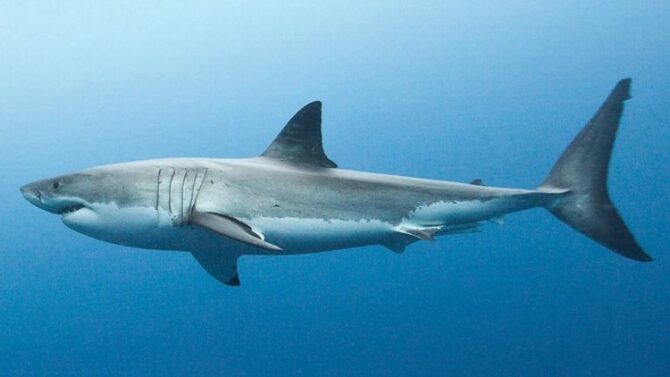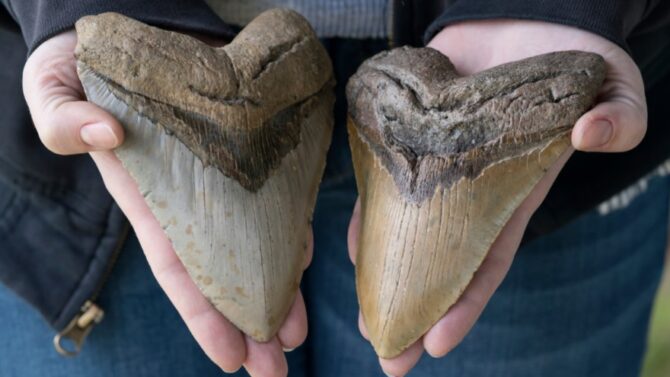Sharks are members of the elasmobranch subclass. This group of fish is known by their cartilaginous skeleton, as well as the fish gill slits that lie on both sides of the head. They also come with pectoral fins.
Popular species include the great white, the whale, the bull, and the tiger.
Overall, there are over 400 species in existence. This fish has a lot of enthusiastic lovers, as well as people that fear it.
There’s been a debate as to whether the shark is truly dangerous, and both sides have brought their points.
We intend to go broad, compiling the most useful information on the notorious fish.
Scientific Classification
| Kingdom | Animalia |
| Phylum | Chordata |
| Class | Chondrichytes |
| Subclass | Elasmobranchii |
| Infraclass | Euselachii |
| Superorder | Selachimorpha |
| Scientific Name | Selachimorpha |
Characteristics
| Length | 5.8 to 7 feet |
| Weight | 1500 to 4000 pounds |
| Venom/Poison | No |
| Skin Type | Rough |
| Habitat | Deep waters, oceans |
| Range | All world’s oceans |
| Diet | Carnivore |
| Life span | 20 to 30 years |
| Gestation Period | 2 years |
| Conservation status | Endangered |
Interesting Facts About Sharks
1. They don’t have a bone
There’s a reason these animals are called cartilaginous fish. They don’t have a single bone in the body.
Experts aren’t quite sure why sharks can’t form bones, but such has remained the case for a long.
In place of bones, this fish has cartilage. The latter is the same material the human nose and ears are made of.
The cartilage skeleton helps in swimming faster, avoiding predators and hunting.
2. They have a good eyesight
Sharks have strong eyesight, which helps them see in dim light. Their eyes are far better than that of humans, about 10 times according to estimates.
They may not see as many colors as humans, but they make up for that with strength.
The eyes have a similar structure to humans. It is made of a cornea, retina, lens, and iris.
There are also two photoreceptors for the animals, rods, and cones. The next important feature is the tapetum lucidum, which is what enables them to see in dim light.
3. Most are cold-blooded
Our fish friend is a poikilotherm, otherwise known as cold-blooded.
This means its body temperature matches that of its environment (the ocean), so it cannot regulate its body temperature.
This is in contrast to the warm-blooded creatures that can regulate their internal temperature.
Not all shark species are cold-blooded. A few of them (like 5) are warm-blooded. The great white and shortfin mako are good examples.
4. They are among the oldest fish species
Experts believe that sharks have been around for millions of years, and this article dates it at 450 million years, stating that they may have been around before trees existed.
This is remarkable because it means they have survived numerous extinctions. The period when these fish first appeared is known as the Ordovician period.
Some species have gone extinct, and the extant ones aren’t considered very safe. However, sharks won’t be going anywhere for long.
5. They have a sixth sense
The 6th sense is not magically or psychically, but these animals do have an extra sensory organ other than the main five.
This 6th sense is called the ampullae of Lorenzo which enables sharks to pick up electromagnetic fields other animals produce. This is a great tool for hunting prey.
General Description
Large jaws, a cartilaginous skeleton, gills at the side of the face, and a cylindrical shape all characterize the shark.
While some people argue that this animal should be classified as a marine mammal, it is a fish and has all the attributes of the latter.
The length depends on the species, though there’s an average that falls between 5.8 and 7 meters.
The average weight falls between 1,500 and 4,000 pounds, and this fish never stops growing. You can determine the age of an individual by its size.
The bigger an individual is, the more likely it is to be old. Of course, this is relative to the species.
Sharks are masters at camouflaging in an environment, but not as prey running from predators. Rather, they employ camouflage when hunting down prey.
They can blend with the darker sides of the ocean, making the prey unlikely to see them.
As we already mentioned, there are multiple species of this fish. They include:

- The tiger shark is so named because of its vertical strips and spots, and its jaws are strong enough to shatter the shells of a sea turtle.
- The great white is arguably the largest species in the ocean, and possibly the most popular shark. It is an apex predator, targeting even large marine mammals.
- The bull shark is considered the most dangerous of all, and it lives in freshwater. The bull, the tiger, and the great white are the three species most likely to attack humans.
- The ragged tooth is a special species because it can breathe air like marine mammals. It looks ferocious, but it is harmless compared to the triple threat.
- The salmon shark is considered the fastest in the world, and it is also highly dangerous. It lives on the northern side of the Pacific ocean.
Behavior
Sharks tend to be solitary and nocturnal, though some species have been discovered to have some social interactions.
Solitary individuals could also team up during mating or in places where food is abundant.
An example of a social species is the hammerhead. They form groups called ‘schools’ and together they swim and hunt. They tend to hang out with individuals their size.
These fishes do some activities in the afternoon, and at night they hunt. Teams are advantageous when they need to take down large prey.
These fishes gang up on the prey and then take it down. They use the element of surprise as a potent tool, from camouflage to ambush.
There are many misconceptions about sharks, one of which is that they eat constantly.
Only small species can handle that. Bigger ones eat only a few days per week because hunting can be strenuous.
The final behavior we notice is migration. Because their prey migrates, these animals follow suit so they could have what to eat.
Distribution and Habitat
This fish has adapted to different habitats, something that happened in the millions of years that it has been around.
Due to its adaptability, it has a variety of habitats. Sharks can be found in both shallow and deep waters.
Most species are saltwater inhabitants, but there are a few in freshwater.
The United States and Australia are two countries where these animals are commonly found, though they are not limited to these regions. They can also be found around Brazil, for instance.
The shark is an endangered species for many reasons we will unveil in a later section. Thus, even with the number of species and the wide range, the population is low.
Diet
This fish is primarily a carnivore, and as an apex predator, it has an abundance of prey to choose from.
All species are powerful sea hunters, feeding on both small and large creatures. Their diet includes:
- Dolphins
- Turtles
- Seals
Because they are apex predators, these fishes tend to be opportunistic. There are some exceptions, however.
Species like the whale and basking sharks feed more on plankton than actual fish.
They are considered peaceful creatures. Opportunistic species can have preferences, but will generally go after what’s available.
Attacks on humans are common, especially with the triple threat. However, humans are not a part of these animals’ diets.
They often spit out a human’s flesh. Sharks don’t actively hunt humans. The attacks could have other factors.
Reproduction and Mating Process
Sharks have a reproduction process that’s unique amongst fishes. Their method of delivery is the main reason there was a debate on the classification.
It delivers more like a mammal than a fish, but that’s the only attribute it shares with other marine mammals like whales.
The species have three different ways of reproducing. There is the viviparous category that gives birth to live young and the ovoviviparous category for those that hatch eggs.
Ovoviviparous species lay the eggs internally as opposed to other fishes that lay the eggs before incubating. The final category is oviparous.
The male comes with two organs found in the anal fins, and it puts one in the cloaca of the female when mating.
The sperm fertilizes the egg, which moves the process to the next level of reproduction.
Sharks have a gestation period moving from 5 months to as long as 3 years. It depends on the species in question. The average is usually a year.
Babies are called pups, and right at birth, they become independent. Parents are not responsible for their growth.
Predators and Threats
Though they’re apex predators, these creatures can sometimes be hunted by other marine mammals.
This is especially the case for smaller species. Predators include killer whales, sperm whales, and orcas.
There’s also some cannibalism amongst the species. Big ones like the great white and tiger tend to hunt smaller ones.
Humans are the biggest threat, and the reason sharks are reducing is largely due to human activities.
One reason these animals are being threatened is because of their slow reproduction. They take time to mature, have long pregnancies, and may not reproduce yearly.
Almost 100 million sharks are killed yearly, and Hong Kong accounts for about 50%. This is either for recreation, fear, or food. These fishes are cooked in different parts of the world, including the United States.
The problem with population decline is the effect it can have on the ecosystem if sharks were to go extinct.
Male vs Female
It may seem difficult to detect the difference between both sexes, but it isn’t so if you know what to look for.
Unlike many other animals, males are smaller than females. They also have different genitals, which is an easy way to tell them apart.
The pelvic fins on males are called claspers, which can’t be found in females.
Besides these, there aren’t too many differences between males and females.
Even the size difference isn’t too noticeable. It’ll take close observation to detect the sex.
Frequently Asked Questions
Are sharks good pets?
We generally don’t recommend sharks as pets because of all the work and risk involved in taking care of one. That said, some people with large aquariums have successfully attempted to keep one of these animals in captivity.
Are sharks dangerous?
Some species are considered highly dangerous, and their attacks on humans have left some consequences. Some examples are the great white and the tiger. However, not all sharks are dangerous.
Are sharks friendly?
Sharks can’t create a connection with humans and hardly form a bond. However, they do have feelings and can even respond to kind treatment. They are not very friendly, but not all species and manhunting monsters.
Do sharks eat dolphins?
Dolphins are part of the shark’s prey, but it isn’t always easy to hunt friendly mammals. The latter can defend itself, and sometimes a hunting expedition could turn into conflict.
Final Thoughts
Sharks are medium to large fishes that are known to be at the top of the food chain, and even though they are threatened by many factors, they still inspire fear and awe in people (and possibly prey).
A lot needs to be done to save them from extinction.








